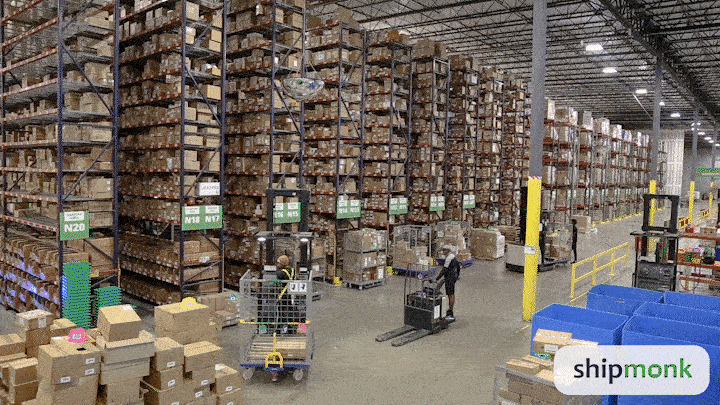In the digital age, businesses find themselves facing ever-increasing expectations from customers. The modern consumer expects instant, personalized, and efficient customer service. With the proliferation of communication channels, the volume of customer inquiries continues to rise, leaving support teams challenged to meet these expectations.
This is where customer service automation steps in, transforming the way businesses engage with their customers. In this article, we'll delve into the world of customer service automation, exploring what it is, how it enhances the customer experience, its advantages and disadvantages, and why your business should consider incorporating automation into your customer service processes.
What is Customer Service Automation?
Customer service automation is a pivotal transformation in the realm of customer support. It is driven by advancements in artificial intelligence (AI) and automation tools. It marks a paradigm shift in how businesses interact with their customers.
This innovation revolves around the use of technology to streamline customer support processes. Whether it's answering frequently asked questions, routing inquiries to the appropriate department, or even providing instant solutions, automation optimizes the entire customer service journey.
Incorporating AI, such as chatbots and predictive analytics, enables businesses to extend automation to multiple communication channels. Live chat, email, social media, and more become accessible arenas for AI-powered customer support.
Automation tools analyze vast amounts of data, customer interactions, and service inquiries in real time. This sets the stage for AI algorithms to take intelligent actions. In essence, customer service automation isn't about replacing human agents but augmenting their capabilities.
Automation efficiently handles routine tasks, allowing your human agents to focus on more complex and high-value interactions. The end result is a win-win: satisfied customers who receive quicker responses and support teams that can concentrate on providing personalized assistance.
Automation is no longer a standalone concept; it has transcended into becoming an integral part of an effective customer service strategy. Businesses must adopt automation to meet the dynamic needs of their customers in the digital age. The future of customer service is fast, efficient, and, most importantly, personalized, and automation is the driving force behind these enhancements.
How can Automation Increase Customer Satisfaction?
As automation continues to shape the future of customer service, the focus is on real-time, personalized experiences that meet and even exceed customers' expectations. With AI at the helm, businesses can now analyze vast troves of customer data. This enables real-time insights into their needs and preferences. This level of automation doesn't just respond to customer inquiries; it actively anticipates them.
One of the fundamental features of AI-driven customer service is its ability to initiate proactive communication. For instance, when a customer makes a purchase, an automated system can instantly send a personalized thank-you message. This will make the customer feel appreciated.
More than just an acknowledgment, this communication can also include tailored product recommendations for future purchases. These recommendations rely on data analysis and machine learning algorithms. These algorithms assess a customer's past behavior, their current purchase, and the behavior of similar customers.
This level of personalized engagement not only boosts customer satisfaction but also enhances the overall shopping experience, potentially leading to additional sales.
The bottom line: AI-driven customer service automation doesn't just react; it predicts, tailors, and elevates the customer journey to new heights.
Advantages of Automated Customer Service
One of the primary advantages of automated customer service is efficiency. Automation streamlines customer support processes, reducing response times and resolving issues more quickly. This leads to higher customer satisfaction, which is crucial for customer loyalty and retention.
Automation software efficiently manages repetitive tasks, such as sorting and routing customer inquiries. This enables human agents to focus on more complex issues, ensuring customers receive quicker responses to routine queries. As a result, customer satisfaction and loyalty improve.
The capacity for automation to provide 24/7 support is a game-changer in modern customer service. Unlike traditional human-based support with limited working hours, automated systems offer assistance round the clock, serving a global customer base across different time zones.
Consistency in customer communication is another significant benefit of automation. Automated systems maintain a consistent tone, style, and message in every interaction. As a result, they provide customers with a uniform and reliable service experience across various support touchpoints.
Traditional human agents can sometimes introduce variations in communication style that may not align with your brand's identity. In contrast, automated responses adhere to a specific communication style and tone.
Scalability is a crucial advantage of automated customer service. As your business grows, the number of customer inquiries tends to increase. Traditional human-based support necessitates hiring more agents to scale up operations, which can be time-consuming and expensive. Automation allows your business to scale customer support without a proportional increase in human agents.
Incorporating automation into your customer service strategy is a fundamental step toward enhancing overall business efficiency. This efficiency, in turn, contributes to higher customer satisfaction, better customer engagement, and the ability to handle a larger customer base without compromising the quality of support. Embracing automation provides your business with a significant advantage in the competitive landscape.
Disadvantages of Automated Customer Service
While automated customer service offers many advantages, it is not without its disadvantages. One of the primary drawbacks is the potential loss of the personal touch that human interactions provide. Some customers value the warmth and empathy that human agents offer. Automated systems can be perceived as cold or unfeeling, which may not align with the brand's image or some customers' expectations.
Highly complex or emotionally charged customer inquiries may be challenging to handle through automation. These nuanced interactions often require the empathy, critical thinking, and adaptability of a human agent. Automated systems might struggle to address complex issues or empathize with frustrated or upset customers effectively.
Another potential downside is the initial investment and maintenance costs of implementing an automated customer service system. While automation can save costs in the long run by reducing labor and human resource expenses, it requires an initial financial investment to set up the system and maintain it. Businesses need to allocate resources and personnel for system development, integration, and continuous monitoring.
Language and cultural nuances can pose challenges for automated systems. Understanding and interpreting slang, regional dialects, or cultural sensitivities might be difficult for AI algorithms. This can lead to misinterpretations and less-effective communication with customers in different parts of the world.
The efficiency of an automated system depends on the quality of its design and the data it is trained on. If not properly configured and maintained, automated systems can lead to inaccuracies or misunderstandings when dealing with customer inquiries, potentially damaging the customer experience.
Examples of Customer Experience Automation
- Chatbots for Instant Support: Many businesses have adopted chatbots to provide instant responses to customer inquiries. These AI-powered chatbots can engage with customers through live chat on websites or social media. They are capable of answering frequently asked questions, assisting with product recommendations, and even solving basic issues.
Chatbots are available 24/7, offering real-time assistance and enhancing customer satisfaction. For instance, an e-commerce website might use a chatbot to help customers navigate product listings, provide information about order status, and address payment-related queries.
- Personalized Email Marketing: Customer experience automation extends to personalized email marketing campaigns. AI algorithms analyze customer data, including past purchases, browsing history, and preferences, to craft tailored email messages. These emails can include product recommendations, special offers, or reminders about abandoned shopping carts. Automation ensures that each customer receives content relevant to their interests and needs, increasing the likelihood of engagement and conversions.
- Automated Social Media Responses: In the age of social media, timely responses to customer inquiries and feedback are crucial. Many businesses use automation to monitor social media channels and instantly reply to customer comments and messages. For example, if a customer posts a query on a company's Facebook page, an automated system can acknowledge the query and provide initial information. This demonstrates that the business is responsive to customer concerns and is committed to offering a high level of service.
- Predictive Analytics for Personalization: Customer experience automation leverages predictive analytics to forecast customer behavior and preferences. These insights empower businesses to provide personalized experiences. For instance, an online streaming service uses predictive analytics to recommend shows or movies to subscribers based on their past viewing history and the behavior of similar viewers. This level of personalization keeps customers engaged and satisfied, reducing churn rates and increasing the customer lifetime value.
- Automated Customer Feedback Surveys: Gathering customer feedback is vital for continuous improvement. Automation facilitates the distribution of customer feedback surveys after specific interactions or transactions. This helps businesses gauge customer satisfaction and identify areas that may require attention.
For instance, after a customer support chat session, an automated system can send a short survey to assess the quality of the support received and gather feedback on the customer's experience. This input can inform training and process enhancements, ensuring better customer experiences in the future.
Conclusions
Customer experience automation is the game-changer your business needs to meet the demands of the modern customer. It enhances the customer experience, making it more efficient, personalized, and satisfying. Despite some limitations, the advantages of automation far outweigh the disadvantages. Your business should consider incorporating automation into its customer service strategy to remain competitive and meet the high expectations of your customers.
Incorporating AI and automation into your customer service can be the key to delivering the real-time, personalized support that modern customers expect. Embrace automation, and you'll not only meet those expectations but exceed them, enhancing your customer's journey and, in turn, your success.
.png)




















